 |
 |
 |
| |
Racial/Ethnic Minorities With HIV More Likely to Get COVID-19 in US
|
| |
| |
CROI 2021, Conference on Retroviruses and Opportunistic Infections, March 6-10, 2021
Mark Mascolini
US blacks, Hispanics, and Asians with HIV proved more likely to get diagnosed with COVID-19 in 2020 than HIV-positive whites, according to a 17,820-person analysis of the National COVID Cohort Collaborative (N3C) [1]. Among blacks and Hispanics-but not whites-higher proportions of people diagnosed with COVID-19 had a positive HIV test than did not.
University of North Carolina researchers and collaborators from other centers noted that most new US HIV diagnoses in 2018 involved black men who have sex with men (MSM), followed by Hispanic MSM. After white MSM, the next two highest HIV incidence rates were found in black women and black heterosexual men. A July 2019 Census Bureau breakdown says whites made up 76.3% of the US population, followed by Hispanics at 18.5%, blacks at 13.4%, and Asians at 5.9% [2].
When figured as COVID-19 cases per 100,000 people, the four leading groups through February 21, 2021 are racial/ethnic minorities: Native Hawaiians/Pacific Islanders, American Indians/Alaska Natives, Hispanics, and blacks, according to the Boston University COVID Tracking Project. Tapping US N3C data, researchers aimed to reckon racial and ethnic disparities in COVID-19 positivity among people with or without HIV.
With 41 sites including more than 3 million people as of February 2021, the NIH-supported N3C uses electronic medical records to parse the US COVID-19 epidemic, analyzing risk factors, protective factors, and long-term health consequences of this pandemic coronavirus disease. This analysis included everyone 18 or older with an N3C record between January 1, 2020 and January 29, 2021.
The investigators defined COVID-19 positivity by ICD-10 code (U07.1) or SARS-CoV-2 RT-PCR or antigen positivity. They defined HIV infection by ICD-10 codes (64%), medication use (33%), or lab results (1%). Researchers used multivariable logistic regression adjusted for age, sex, and comorbidity index to estimate odds of COVID-19 positivity by race/ethnicity among people with HIV.
Among the 372,716 people who got a COVID-19 diagnosis from January 2020 through January 2021, 2428 (0.65%) had HIV infection. Among the 370,288 HIV-negative people with COVID-19, age-group proportions dwindled slightly with greater age: 31.3% under 30 years, 23.2% from 30 to 44, 22.1% from 45 to 59, and 21.9% at 60 or older. Among HIV-positive people with COVID-19, proportions swelled in the middle-aged groups: 12.4% under 30 years, 29.5% from 30 to 44, 33.3% from 45 to 59, and 24.2% at 60 or older.
Women made up a slightly larger proportion of HIV-negative COVID-19 patients than men (53.9% women vs 45.9% men), whereas the opposite proved true in the HIV-positive COVID-19 group (32.9% women vs 66.9% men), reflecting the male predominance of HIV in the US. Among people with HIV and COVID-19, 68.2% had a modified Charlson Comorbidity Index of 3 or higher, compared with 9.9% of the HIV-negative COVID-19 group.
White people with COVID-19 were significantly less likely to have HIV (27.9% with HIV vs 50.1% without HIV, P < 0.001), whereas black people with COVID-19 were significantly more likely to have HIV (44.1% with HIV vs 15.4% without HIV, P < 0.001), and Hispanics with COVID-19 were almost significantly more likely to have HIV (8.6% with HIV vs 7.5% without HIV, P = 0.057).
On the other hand, white people with HIV were significantly less likely to have COVID-19 (27.9% with COVID-19 vs 39.0% without COVID-19, P < 0.001), while black people with HIV were significantly more likely to have COVID-19 (44.2% with COVID-19 vs 39.9% without COVID-19, P < 0.001), and Hispanics with HIV were significantly more likely to have COVID-19 (8.6% with COVID-19 vs 5.7% without COVID-19, P < 0.001).
In an adjusted analysis involving 17,820 people with HIV, compared with whites, blacks were about 60% more likely to have COVID-19 (adjusted odds ratio [aOR] 1.59, 95% confidence interval [C] 1.37 to 1.86), Hispanics were more than twice as likely to have COVID-19 (aOR 2.17, 95% CI 1.68 to 2.83), and Asians were more than twice as likely to have COVID-19 (aOR 2.18, 95% CI 1.30 to 3.63).
Although their dataset included more than 3 million people, the researchers cautioned that it may not represent the general population or the HIV population in the United States. But with that limitation in mind, they concluded that racial and ethnic disparities in COVID-19 diagnosis exist in HIV-positive US residents. Compared with HIV-positive whites, they found that blacks, Hispanics, and Asians with HIV are more likely to have COVID-19, even after considering age, sex, and comorbidities.
References
1. Islam JY, Madhira V, Sun J, et al. Racial disparities in COVID-19 positivity among people living with HIV in the US. CROI 2021, Conference on Retroviruses and Opportunistic Infections, March 6-10, 2021. Abstract 141.
2. US Census Bureau. Quick facts. United States. https://www.census.gov/quickfacts/fact/table/US/SEX255219
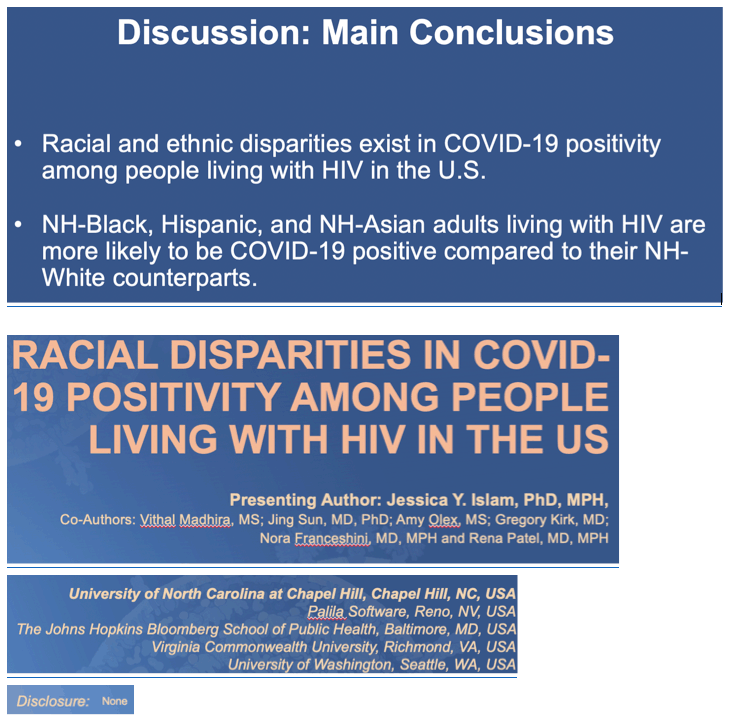
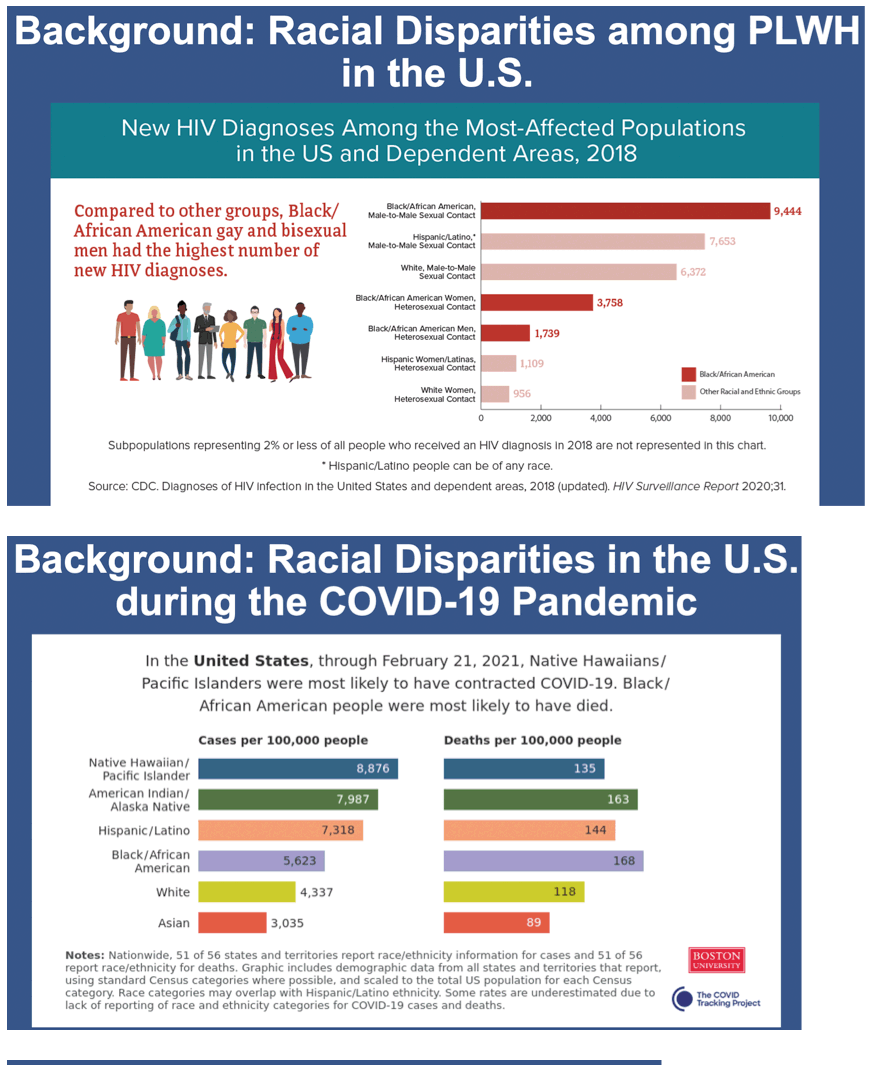
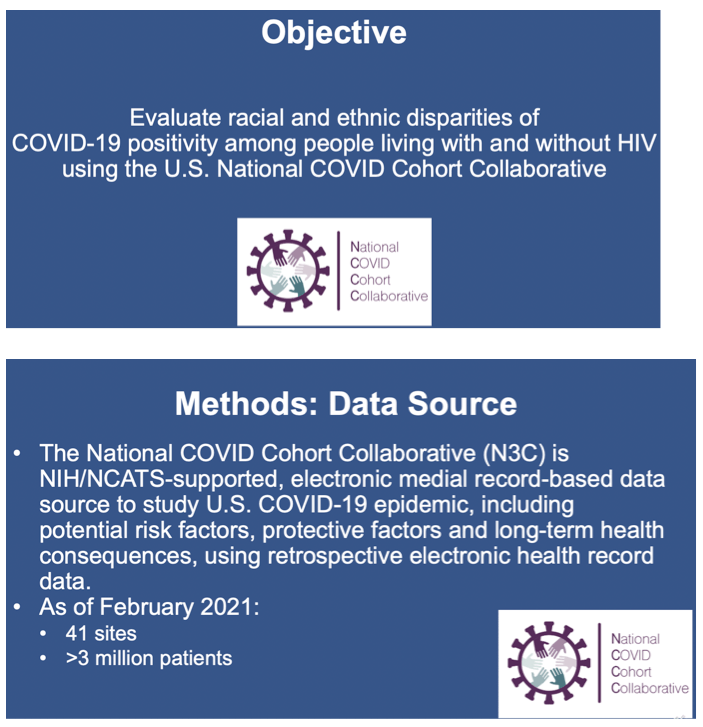
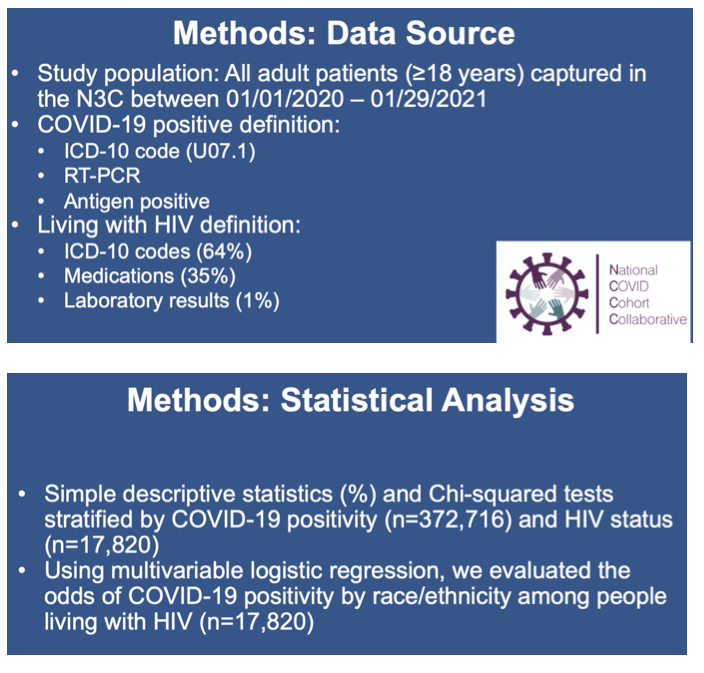
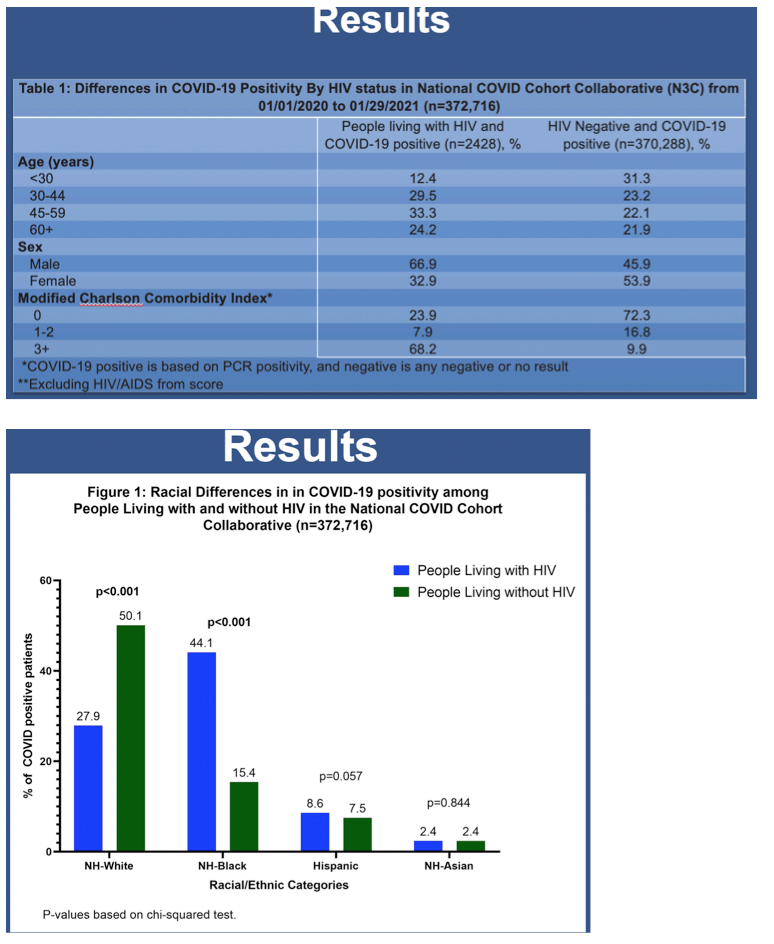
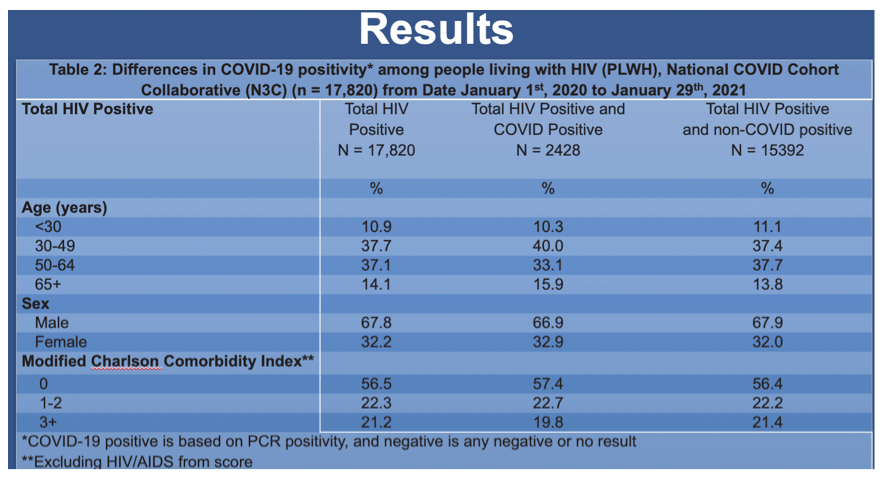
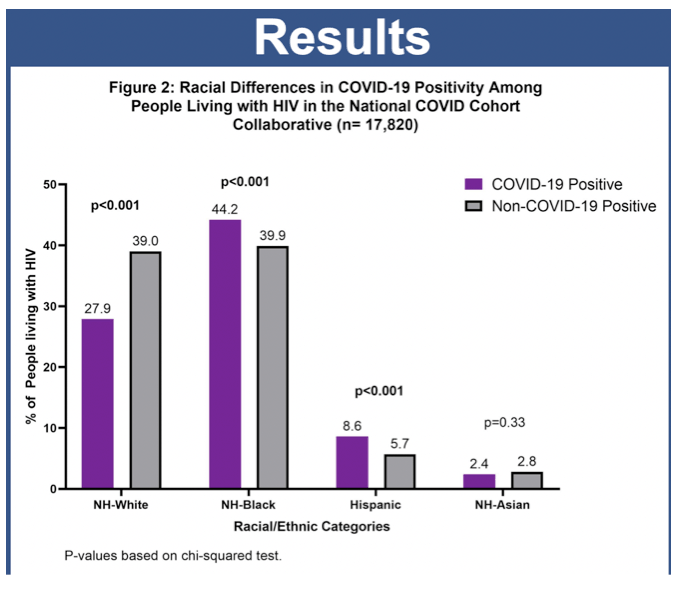
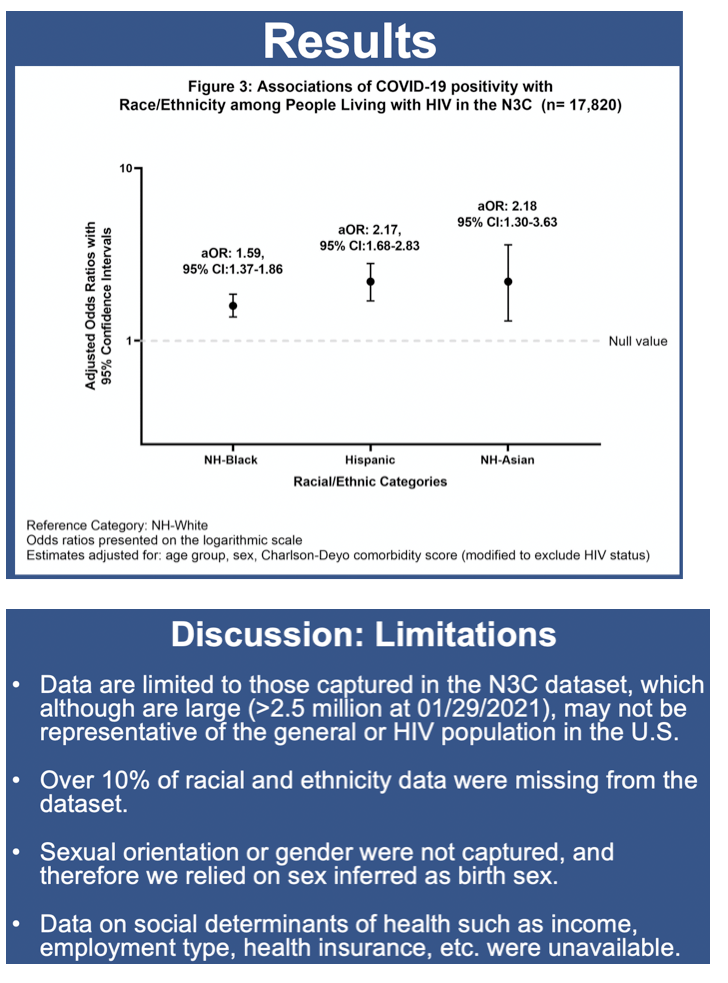
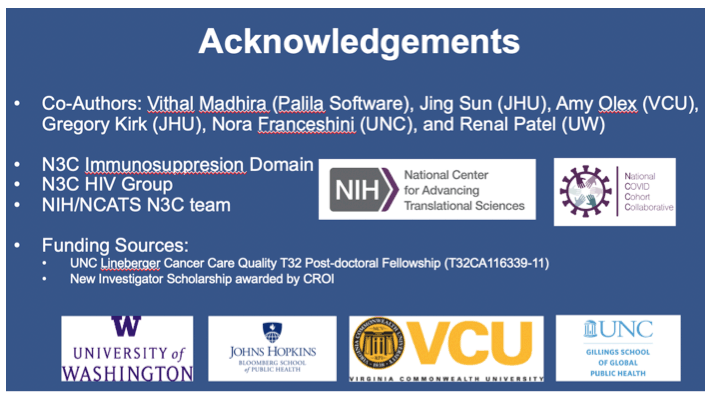
|
| |
|
 |
 |
|
|